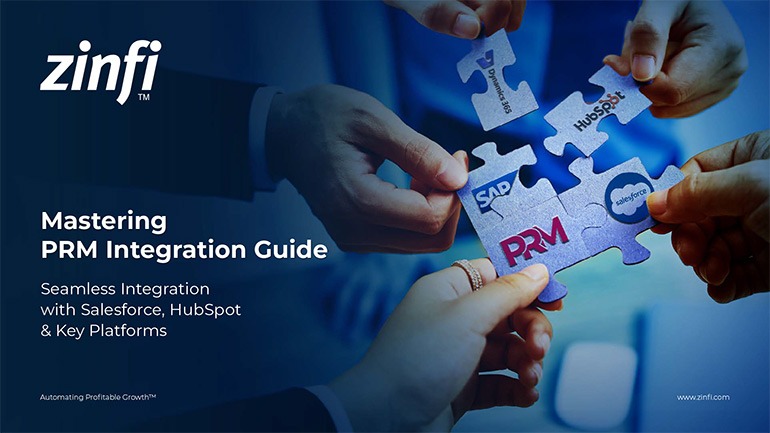Glossary - How to - Partner Portal Best Practices
How to Implement Partner Portal Best Practices?
Introduction
A partner portal is a centralized platform that enables businesses to manage and collaborate with their channel partners effectively. It provides access to essential tools, resources, and information, ensuring seamless communication and partner relationship management (PRM) efficiency. Implementing partner portal best practices can significantly improve partner engagement, increase sales, and streamline operations.
In partner relationship management (PRM), automation is critical in enhancing portal efficiency. A well-structured partner portal allows companies to optimize partner onboarding, training, sales enablement, and performance tracking. Adopting best practices ensures the portal aligns with business objectives while fostering a strong and productive partner ecosystem.
Key Takeaways:
Design an Intuitive and User-Friendly Interface
A well-designed partner portal should be easy to navigate and intuitive for users of all technical skill levels.
- Use a clean and structured layout with clear menu options.
- Ensure that the dashboard provides quick access to critical tools and data.
- Optimize the portal for mobile accessibility to accommodate on-the-go users.
- Utilize search functionalities and AI-driven recommendations for personalized experiences.
Streamline Partner Onboarding and Training
Efficient onboarding and training processes are essential to getting partners up to speed.
- Provide interactive onboarding tutorials and step-by-step guides.
- Offer self-paced training modules and certifications for continuous learning.
- Use gamification elements to enhance engagement and knowledge retention.
- Automate the onboarding process with workflows that guide partners through key steps.
Enhance Sales Enablement with Valuable Resources
A successful partner portal should offer the right resources to enable sales success.
- Provide a centralized repository for marketing and sales collateral.
- Offer pre-configured marketing campaigns and lead-generation tools.
- Integrate CRM and PRM systems for real-time sales tracking.
- Personalize content recommendations based on partner activities and interests.
Foster Seamless Communication and Collaboration
Effective communication is key to maintaining strong partner relationships.
- Integrate chat tools, discussion forums, and virtual collaboration spaces.
- Use automated notifications to keep partners informed of updates and opportunities.
- Provide direct access to account managers and technical support teams.
- Leverage feedback loops and surveys to understand partner needs and improve the portal.
Measure and Optimize Portal Performance
Continuous monitoring and optimization are crucial for maintaining an effective partner portal.
- Track engagement metrics such as login frequency, content downloads, and course completion rates.
- Use analytics dashboards to assess partner performance and identify areas of improvement.
- Collect and analyze feedback to refine portal features and functionalities.
- Implement A/B testing to determine the most effective portal design and content strategies.
Summary of Key Takeaways:
By following these best practices, organizations can create a highly effective partner portal that enhances partner experience, streamlines sales enablement, and strengthens collaboration. The key focus areas include user-friendly design, efficient onboarding, sales enablement, seamless communication, and performance measurement. A well-implemented partner portal ensures long-term success and sustained partner engagement.
Industry-Specific Examples:
- Automotive Manufacturing: A leading automotive company implemented a partner portal with real-time inventory tracking and sales forecasting tools, helping dealers plan their purchases more effectively and reducing stockouts.
- Consumer Electronics: An electronics manufacturer introduced a gamified training module within their portal, leading to a 35% increase in partner engagement and product knowledge.
- Energy Production: A renewable energy provider integrated IoT-based performance monitoring dashboards into their portal, allowing partners to optimize system performance and reduce downtime.
- Financial Services: A global bank used an AI-driven content recommendation system in their portal to deliver personalized financial product training to independent advisors, improving sales conversion rates.
- Food and Beverage: A beverage company utilized a marketing automation feature within its portal to enable distributors to launch localized marketing campaigns with pre-approved branding and messaging.
- Healthcare Services: A medical device company enhanced partner collaboration by integrating secure document-sharing capabilities into its portal, ensuring compliance with healthcare regulations.
- Information Technology: An IT firm leveraged data analytics in their portal to track partner certification progress and automatically suggest relevant training modules, leading to higher partner retention.
- Pharmaceutical Development: A pharmaceutical company developed an exclusive partner portal section with real-time updates on drug trials and compliance guidelines to keep stakeholders informed.
- Retail Industry: A fashion retailer improved supply chain efficiency by providing vendors with demand forecasting insights through its partner portal.
- Telecommunications: A telecom provider introduced a commission tracking tool within its portal, allowing partners to monitor earnings and incentives in real-time and increasing motivation and performance.
Conclusion:
Implementing partner portal best practices is essential for businesses seeking to optimize their channel partner strategies. A well-structured partner portal enhances partner engagement, streamlines sales enablement, improves collaboration, and drives measurable business growth. Organizations can create a robust partner portal that aligns with business objectives and fosters long-term partner success by focusing on intuitive design, seamless onboarding, sales support, communication, and performance tracking
Associated Keywords:
- Partner Portal Optimization
- Best Practices for Partner Portals
- Partner Portal Engagement Strategies















